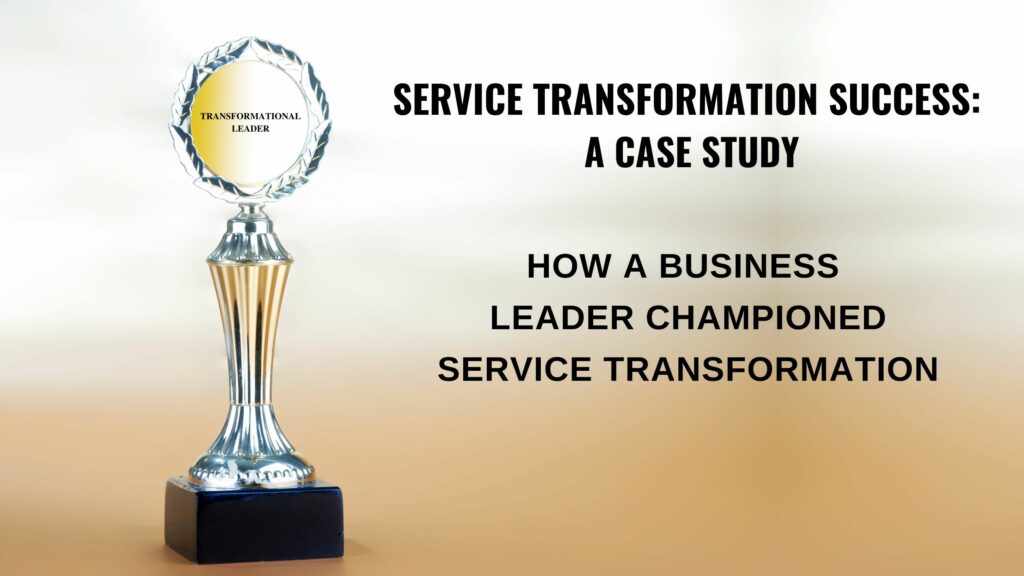Every so often a unicorn leader comes along and walks the talk. I’ve had the good fortune to work with one such leader on a service transformation project. Now, there are two sets of forces at play in activating project success. One force is transactional and the other psychological. This leader commandeered both with finesse.
The transactional force comprises the visible components that include creating the endgame vision, designing the new service delivery framework, re-engineering processes, converting into a digitally enabled business and synchronizing the new moving parts. The other less visible, but equally critical psychological force, is the one that works on shifting the culture of the business and capturing the hearts and minds of the employees. Its power lies in unfreezing employees from the existing state of service delivery and enabling them to create a new psychological contract with the future state of service excellence.
There are two sets of forces at play in activating project success. One force is transactional and the other psychological. This leader commandeered both with finesse.
This story focusses on how this leader did what needed to be done to ensure that the psychological force for the project hit the sweet spot with employees.
First of all, the project was declared to be a culture change project, which of course it was and therefore, all members of the leadership team, including supervisors, needed to become champions of the change. This move created the expectation that leaders would hold themselves to a higher standard of accountability for action, not just for talk.
Leaders were required to become unstuck from their personalities. All too often, individuals become stuck in their personality jails. They become tethered to the ballooning egos, know-it-all attitudes, authoritarianism and stridency that suffocates employee growth and wellness. This dysfunction had to end and to a large extent, it did.
First of all, the project was declared to be a culture change project, which of course it was and therefore, all members of the leadership team, including supervisors, needed to become champions of the change.
The spirit of the employee community was energized by building collaboration, co-operation and cohesion. Collaboration was about finding solutions together, co-operation was about helpfulness and cohesion was about each department becoming a well-oiled team. Let me share a little secret with you. Whilst my professional background is deeply imbedded in the discipline of human resource management, I am not one to promote the “we are family agenda.” I’m not knocking it, just saying that I believe that we have our own families at home, we do not need to come to work and be connected to yet another family. I believe that we need to be “well-oiled teams” at work. Every family should be a well-oiled team (this would be nice, but not always the reality), but every well-oiled team does not have to be a family.
Over-communication became one of the primary levers for minimizing fake news and fear mongering. Information was available through several channels that could be accessed, at will, by employees. A newsletter was published fortnightly and an electronic voice of the employee platform was launched, amidst other communication highways.
A newsletter was published fortnightly and an electronic voice of the employee platform was launched, amidst other communication highways.
One of the most shape-shifting moves was challenging the leadership team members to envision and deploy activities that generated cohesion in their departments. These deployments had a major condition, which was to utilize a format that would allow for shared leadership between managers and their supervisors. The thinking here was that leadership teams in each department needed to cultivate unity of purpose at the top, so that when team members looked up, they would not have seen leaders who were embroiled in bickering and other dysfunctional behaviours.
One of the highlights of the initiative was that one supervisor became so invested in the process, that he was reassigned as a floating supervisor with responsibility for ensuring that staff across all departments were compliant with the newly-released service delivery standards. Needless to say, he was a perfect fit for the position and another unicorn leader was born.
Both the client and the consultant understood that some elements of the initiative would be moving targets, so while we planned for acceptance, we were undaunted by the pushback.
Did these moves, whilst thoughtful, still meet with resistance? Absolutely. But, as with many large-scale transformation initiatives, it’s about direction being more important than speed. Both the client and the consultant understood that some elements of the initiative would be moving targets, so while we planned for acceptance, we were undaunted by the pushback.
We knew as well, that one cannot predict crowd reaction to every component of a rollout program.
We just kept reminding ourselves about the “why” behind the transformation and this helped us to curate the most optimal responses to situations that arose.

